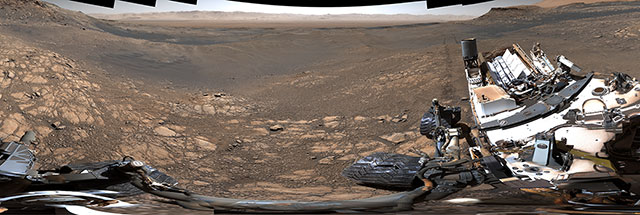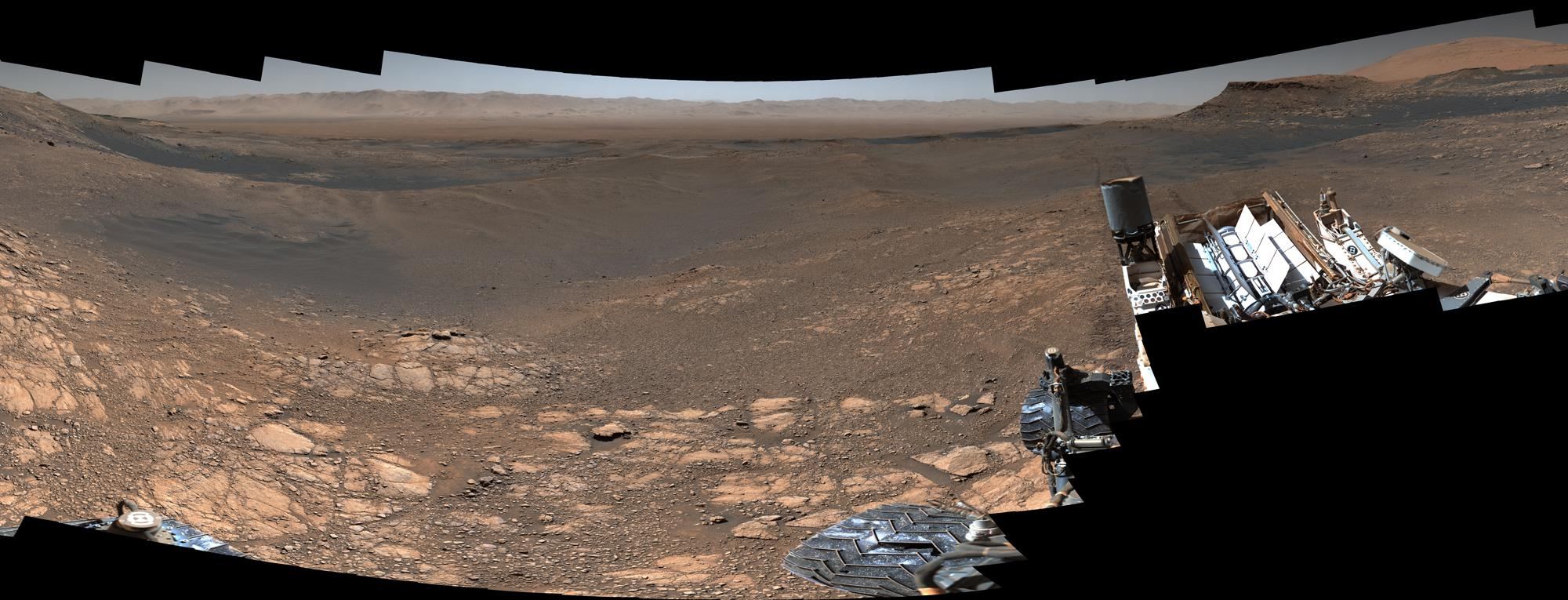The Curiosity rover on Mars has captured the most detailed panoramic image ever taken of the Red Planet’s surface. The image is made from over 1,000 images, containing 1.8 billion pixels of the Martian landscape, with 2.43 GB of high-resolution planetary goodness.
“This is the first time during the mission we’ve dedicated our operations to a stereo 360-degree panorama,” said Curiosity Project Scientist Ashwin Vasavada.
The rover has been in Gale Crater on Mars since August of 2012.
NASA and JPL even put together a special feature where you can zoom in and out of the photo, plus a sweeping video of the scene, below.
The panorama was taken between November 24 and December 1, 2019 – over the week of the Thanksgiving holiday in the US. NASA said the rover was “sitting still with few tasks to do while awaiting the team to return and provide its next commands. The rover had a rare chance to image its surroundings from the same vantage point several days in a row.”
“While many on our team were at home enjoying turkey, Curiosity produced this feast for the eyes,” Vasavada said.
The image shows a panorama of Glen Torridon, a region on the side of Mount Sharp that Curiosity is exploring. The rover took more than 6 1/2 hours of exposures over four days with the rover’s Mast Camera, or Mastcam, using its telephoto lens to produce the panorama.
The Mastcam operators had pre-programmed the complex task list, which included pointing the rover’s mast and making sure the images were in focus. The photos were taken between noon and 2 p.m. local Mars time to ensure consistent lighting.

The Mastcam also used its medium-angle lens to produce a lower-resolution, nearly 650-million-pixel panorama that includes the rover’s deck and robotic arm.
Over the following weeks, the images were painstakingly stitched together by the rover imaging team; they blend the edges of each photo to create a seamless look.
“What I love about this panorama is that we can zoom way in and see details far in the distance,” said Vasavada in the video. “When you start to do that, you can see the rim of the crater we’re inside of, all the way to the north.”
He adds, “Here’s an impressive sight: 20 miles away is Slangpos crater, just inside Gale crater’s rim. End to end, Slangpos is three miles wide! Something huge must have struck here. Whenever I start to think that Mars looks familiar, sights like this dramatic impact crater remind me that we’re looking at a different planet.”
The next highest-res photo ever taken by Curiosity was in 2013 when it produced a 1.3-billion-pixel panorama.
And in other rover news, today NASA will announce the name chosen for the Mars 2020 rover. The space agency held a naming contest and more than 28,000 K-12 students across the US responded to NASA’s call to “Name the Rover.”

